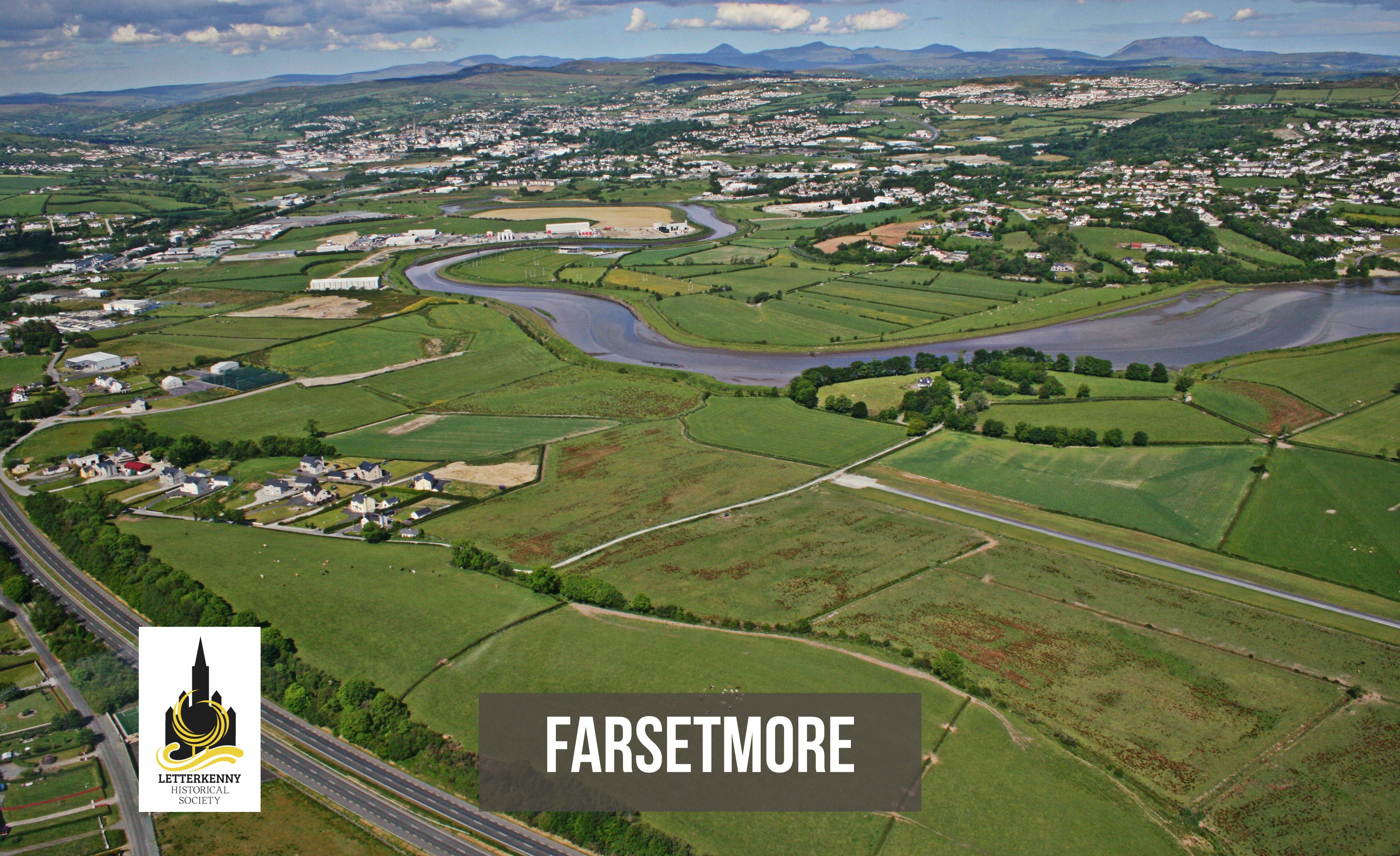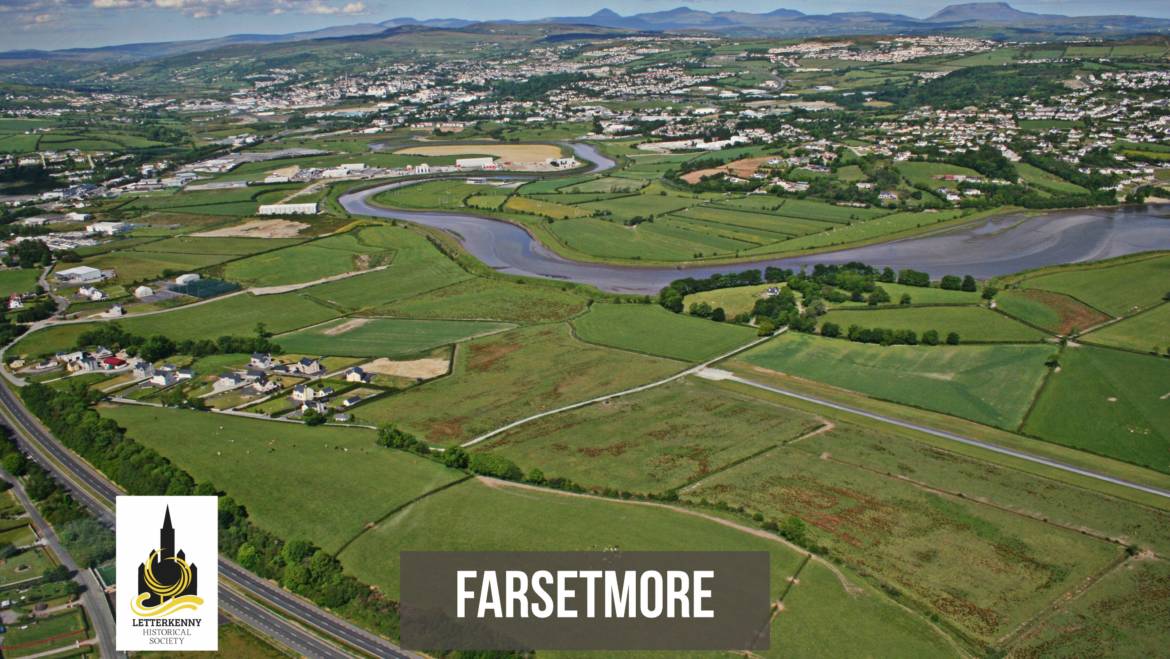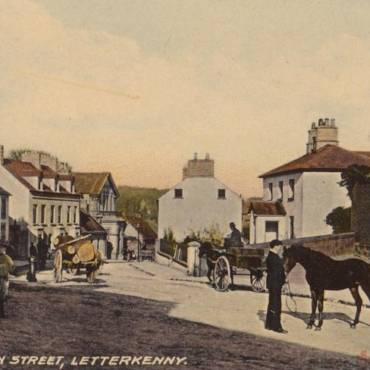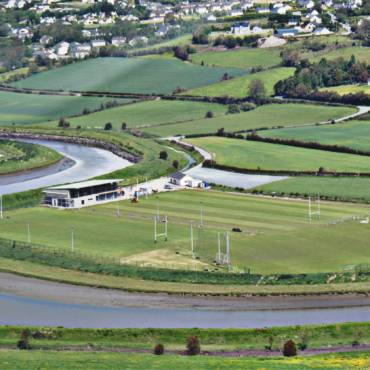The Battle of Farsetmore 1567
Today, people entering the town of Letterkenny from the east or south do so by crossing over the River Swilly at either the Port or Oldtown bridges. However, these crossings only emerged in the seventeenth century with the construction of the new market town. Prior to this, the principal crossing points of the river were located at Ath-thairsí and Scairbh Sholais (Scarrifhollis) to the west and Fearsad Suilighe Mór (Farsetmore) to the east.
These entrances into the O’Donnell territory known as Tír Luighdheach (where Letterkenny is today) required the building of fortified castles at each crossing. Calvagh O’Donnell built a small castle in the 1560s at the western crossing of Scairbh Sholais while another fort was located on a height overlooking the eastern crossing known as Ard na gCorr Fhiadh (Height on the Pointed Slope of the Deer), today anglicized as Ardingary. Remains of this fort are evident on the 1836 Ordnance Survey map, located close to the Lisnenan Heights estate in the town today and known as Castlebane (from Caisléan Bán, the White Fort).
All of these crossings into Tír Luighdheach were the scenes of ferocious battles over the centuries. Godfrey O’Donnell famously met his death at the crossing of Ath-thairsí in 1258 while Scarrifhollis was the location of a decisive battle in 1650 between the Royalist army of Heber MacMahon and the Parliamentary forces of Sir Charles Coote. The crossing at Fearsad Suilighe Mór also witnessed several battles between the O’Donnell and O’Neill clans for centuries prior to its most famous battle in 1567 – in 1098 and 1392 for example.
However, the most famous battle that took place here occurred on the 8th May 1567, between the forces of Hugh O’Donnell of Tír Chonaill (father of Red Hugh O’Donnell) and Shane O’Neill of Tír Eoghain. With his repeated invasions into his neighbouring territories, Shane “The Proud” O’Neill made no secret of his wish to control all of Ulster himself, and was a constant thorn to Queen Elizabeth I. This ambitious and almost Napoleonesque figure would meet his ‘Waterloo’ on the banks of the Swilly River on 8thMay 1567.
From the panoramic view of his fort at Ard na gCorr Fhiadh, Hugh O’Donnell observed the approach of Shane O’Neill as he made his invasion into his territory and could determine where he was going to cross. Unsure of the exact number of his opposition, O’Donnell decided to wait for the approach of O’Neill and plan a surprise attack. Assistance arrived in the form of the McSweenys, loyal septs to the O’Donnells. Now greatly strengthened by his allies’ arrival, O’Donnell prepared to attack the camp of O’Neill, who had already crossed the river and were now located in a place called Cluain Áire (The Meadow of Safety) – not far from the location of the Rugby Club today. With this surprise attack by O’Donnell the Battle of Fearsad Mór began. The Annals of the Four Masters tells us:
“Fierce and desperate were the grim and terrible looks that each cast at the other from their starlike eyes; they raised the battle cry aloud, and their united shouting, when rushing together, was sufficient to strike with dismay and turn to flight the feeble and the unwarlike. They proceeded and continued to strike, mangle, slaughter, and cut down one another for a long time, so that men were soon laid low, heroes wounded, youths slain, and robust heroes mangled in the slaughter.”
The sheer force and aggression of this attack by O’Donnell, lasting approximately six hours, caused Shane’s troops to pull back and retreat over the crossing of the Swilly. However, by now, the water had risen and concealed the sand banks over which they had so easily crossed only hours previously. In the panic of the retreat, a vast number of O’Neill’s horses and men drowned in the river, with a sandbank there still holding the name Fearsad Eachmharcach or the “Horseman’s bank” in memory of this. In all, O’Neill is said to have lost approximately 1300 men while O’Donnell’s losses were said to be much fewer.
Knowing of the other crossing over the river at Ath-thairsi, Shane made an ignominious escape travelling westwards along the banks, accompanied by the former allies of O’Donnell, the O’Gallaghers. From here he managed to cross the river and make his escape back to his own territory of Tír Eoghain.
Bereft of troops and support, Shane approached his one-time enemies, the Antrim Scots, for assistance. The McDonnells of the Glens initially welcomed him but “after extraordinary drinking, and over-liberall carouses…Shane was set upon, overmastered, and with many wounds slain” as the McDonnells decided to “mangle him nimbly, and put him unsparingly to the sword, and bereave him of life.”
Thus was how one of the greatest leaders of the Tyrone dynasty of the O’Neills met his match in the guise of Hugh O’Donnell on the banks of the River Swilly. Crucially, this was to be the last major battle between the centuries old competing factions of the O’Neills and O’Donnells prior to their unification in the Nine Years’ War (1594-1603) which would set in motion a chain of events that ultimately led to the Plantation of Ulster, and with it, the creation of the market town of Letterkenny.




